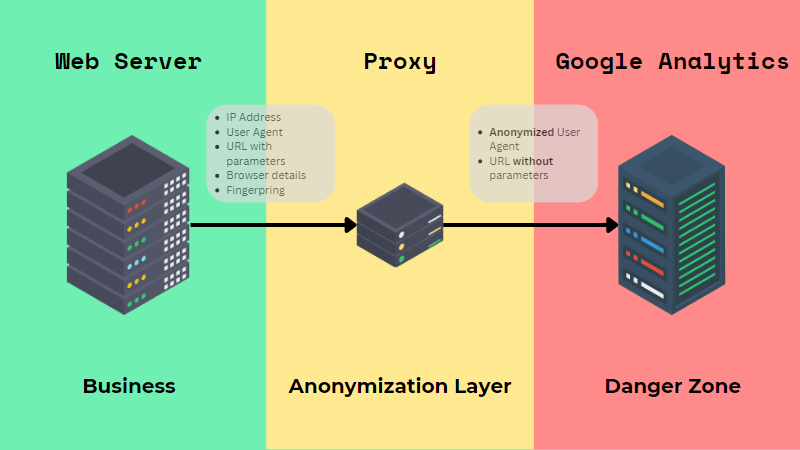Ultimate Frequently Asked Question: What Data Does Google Analytics Prohibit Collecting?
Ultimate Frequently Asked Question: What Data Does Google Analytics Prohibit Collecting?
Blog Article
Comprehending the Ins and Outs of Data Collection Limitations in Google Analytics to Boost Your Insights
Browsing the landscape of data collection within Google Analytics unveils a myriad of complexities that can considerably impact the understandings originated from your digital analytics. As services significantly count on data-driven decision-making, comprehending the limitations and subtleties of data collection ends up being critical. From data tasting in reports to the difficulties posed by cross-domain tracking and the increase of ad blockers, each aspect includes layers of complexity to the precision and depth of the information available. However, the real intrigue hinges on how these constraints can be not only acknowledged however tactically steered to elevate the high quality and dependability of the insights you extract from your analytics initiatives.
Data Sampling in Records
When assessing data in Google Analytics, one important aspect to consider is the visibility of information tasting in records, which can impact the precision and dependability of insights stemmed from the information. Data tasting is a method used to analyze a part of data as opposed to the total dataset. In Google Analytics, when the quantity of information exceeds a certain limit, the platform might turn to tasting to expedite report generation. While tasting can be beneficial in reducing processing time for huge datasets, it can also present inaccuracies in the understandings offered.
The ramifications of information sampling can be considerable, especially when making important business choices based on the analytics data. Testing can cause manipulated results and false impressions, specifically in evaluations calling for a granular sight of user actions or performance metrics. To alleviate the effect of data tasting, it is necessary to comprehend when tasting occurs, keep track of the tasting price in reports, and take into consideration spending in Google Analytics 360, which provides higher handling limitations to lower the need for sampling. By recognizing information tasting in reports, analysts can make more enlightened choices based upon precise data insights.
Cross-Domain Tracking Difficulties
Cross-domain monitoring provides a complex set of obstacles that can influence the accuracy and dependability of data aggregation in Google Analytics. Without proper arrangement, Google Analytics might translate these communications as separate sessions, leading to information fragmentation and imprecise understandings.
Additionally, cross-domain tracking requires meticulous configuration including adjustments to tracking codes and arrangements throughout all domain names entailed. Failure to carry out these changes correctly can result in data discrepancies and insufficient tracking, preventing the capability to comprehend customer behavior flawlessly throughout domains. Additionally, difficulties can emerge when handling third-party tools or platforms that might not fully sustain cross-domain tracking, further making complex the data assimilation process. Getting over these challenges demands thorough preparation, exact application, and continuous tracking to make sure data precision and acquire significant insights throughout domains in Google Analytics.
Effect of Advertisement Blockers
The occurrence of ad blockers positions substantial difficulties to data collection precision in Google Analytics. These devices not just obstruct ads but can additionally interfere with the tracking codes made use of by Google Analytics to collect data.

To mitigate the effect of advertisement blockers on data collection, web site owners can check out alternative monitoring approaches, such as server-side monitoring or implementing authorization management devices to encourage users to disable advertisement blockers on their sites. By this website proactively resolving the challenges presented by advertisement blockers, organizations can enhance the accuracy of their information collection in Google Analytics and enhance their total understanding of individual habits.

Cookie Deletion Results
Occasionally, cookie deletion can impact the integrity of information gathered by Google look here Analytics, affecting the precision of internet site traffic evaluation. Cookies are tiny items of data saved on an individual's device that help track their on-line habits. When users remove cookies, it can interrupt the tracking procedure, resulting in voids in data collection. This can result in skewed analytics records, as returning visitors might be counted as new ones after cookie deletion. If a substantial number of users consistently remove cookies, it can make it challenging to track customer journeys properly and recognize their interactions with the site. Therefore, organizations may choose based on insufficient or imprecise information, impacting their advertising techniques and total efficiency examination. To alleviate the effects of cookie removal, it is vital to complement cookie-based data with various other tracking methods, such as server-side monitoring or incorporating first-party information resources, to ensure a more thorough understanding of customer actions.
Information Personal Privacy Regulations
In light of increasing worries bordering information personal privacy and security, services using Google Analytics must stick to strict data privacy laws to ensure conformity and protect user information. GDPR requireds that organizations acquire explicit authorization from users prior to collecting and refining their personal information.
Apart from GDPR, there are various other data personal privacy guidelines like the California Customer Personal Privacy Act (CCPA) and the ePrivacy Instruction that organizations need to think about when utilizing Google Analytics. These regulations intend to protect user information and offer individuals extra control over just how their details is accumulated and made use of. By abiding and recognizing with these data personal privacy regulations, companies can construct trust with their users and show a commitment to data protection and personal privacy.
Verdict
In conclusion, comprehending the restrictions of information collection in Google Analytics is vital for boosting insights. Information sampling in reports, cross-domain monitoring obstacles, the impact of ad blockers, cookie deletion results, and information privacy regulations all play a duty in the accuracy and completeness of the information collected. By recognizing these restrictions and locating means to mitigate them, companies can ensure they are making educated decisions based upon trustworthy information.
When examining data in Google Analytics, one vital element to take into consideration is the visibility of information tasting in records, which can influence the precision and reliability of understandings derived from the information. To reduce the effects of cookie removal, it is vital to enhance cookie-based data with various other monitoring techniques, such as server-side tracking company website or integrating first-party data sources, to make certain a more extensive understanding of customer actions.

Information sampling in reports, cross-domain monitoring obstacles, the influence of advertisement blockers, cookie deletion effects, and data privacy guidelines all play a duty in the accuracy and completeness of the information accumulated.
Report this page